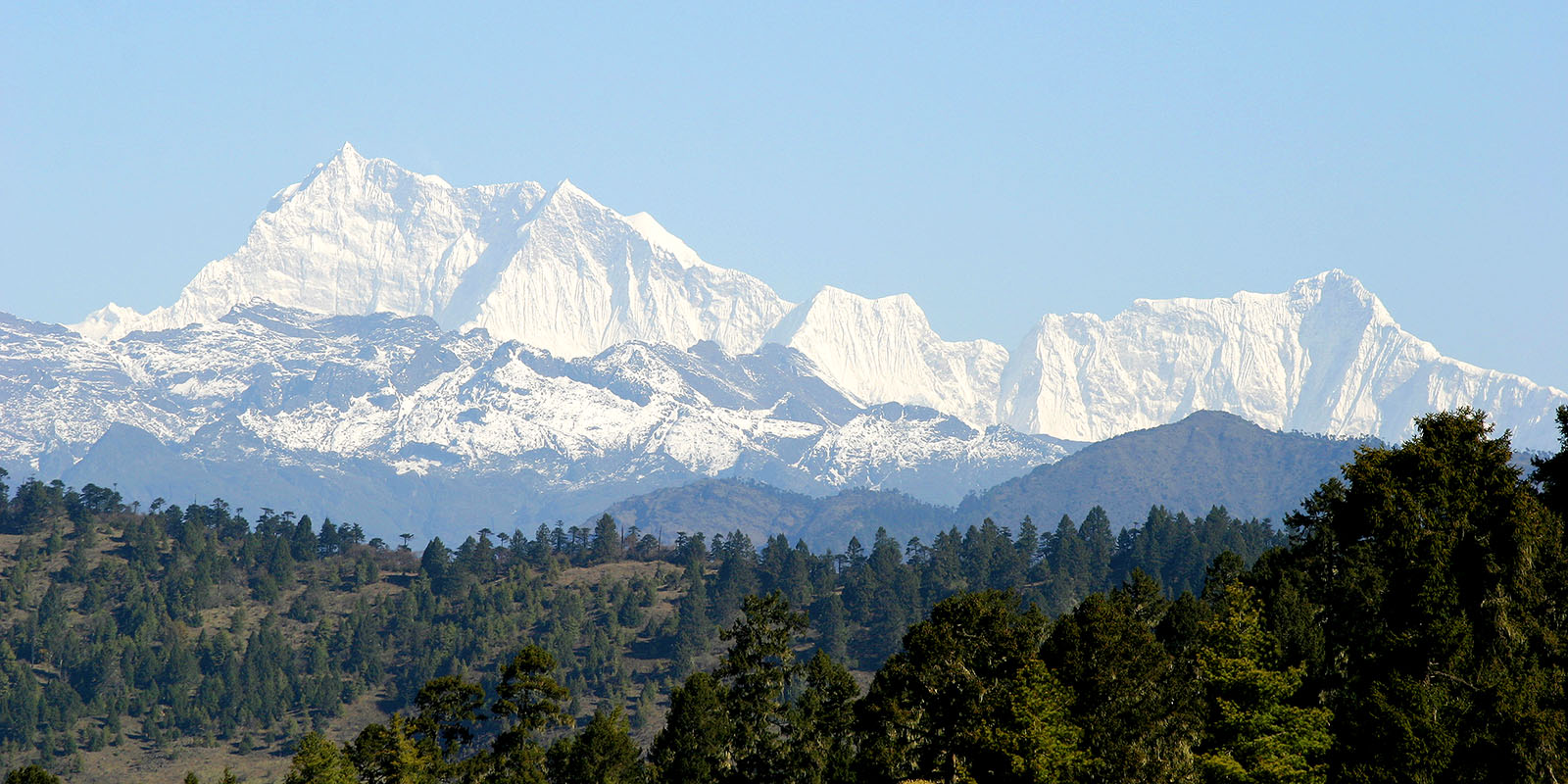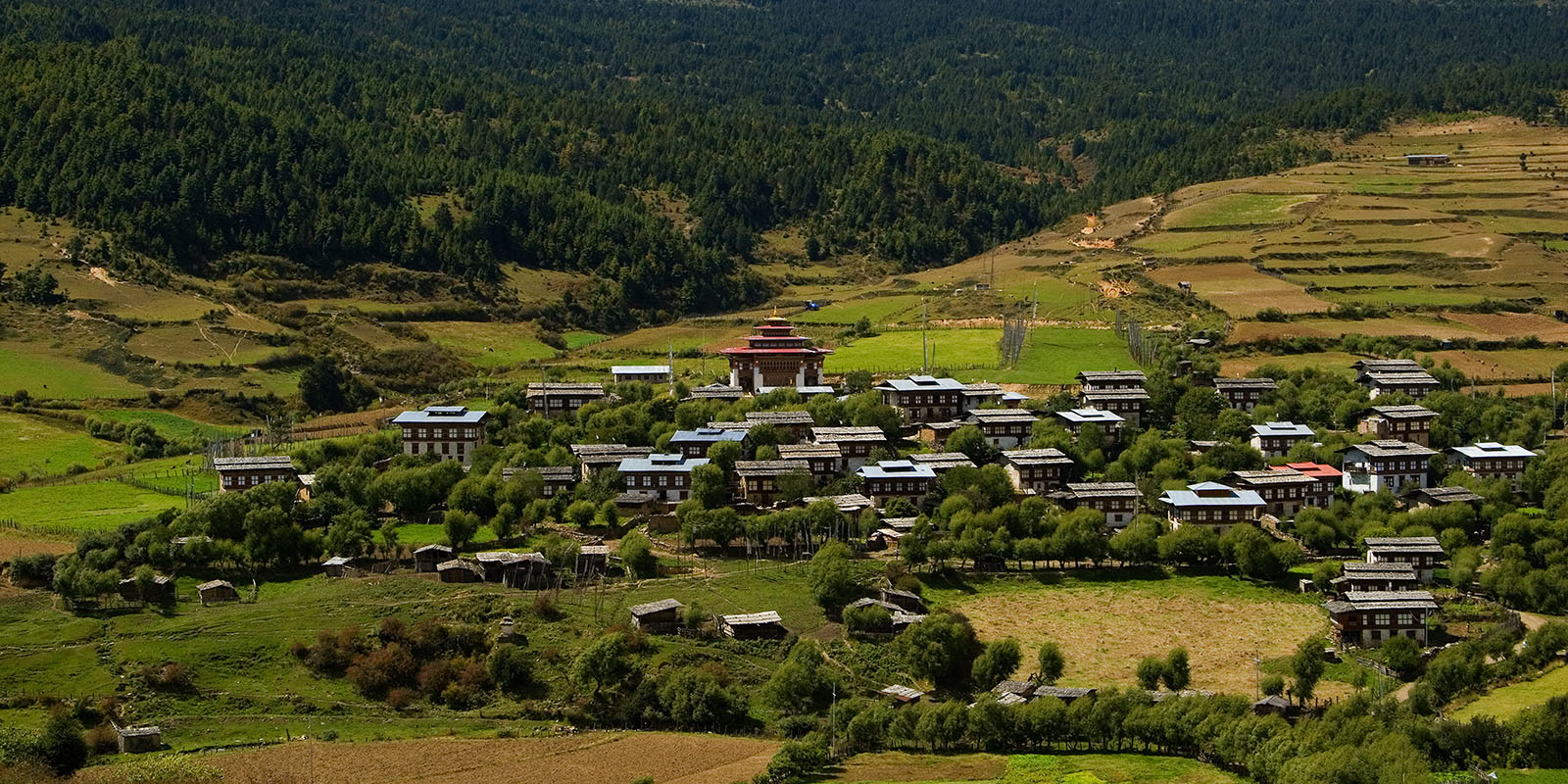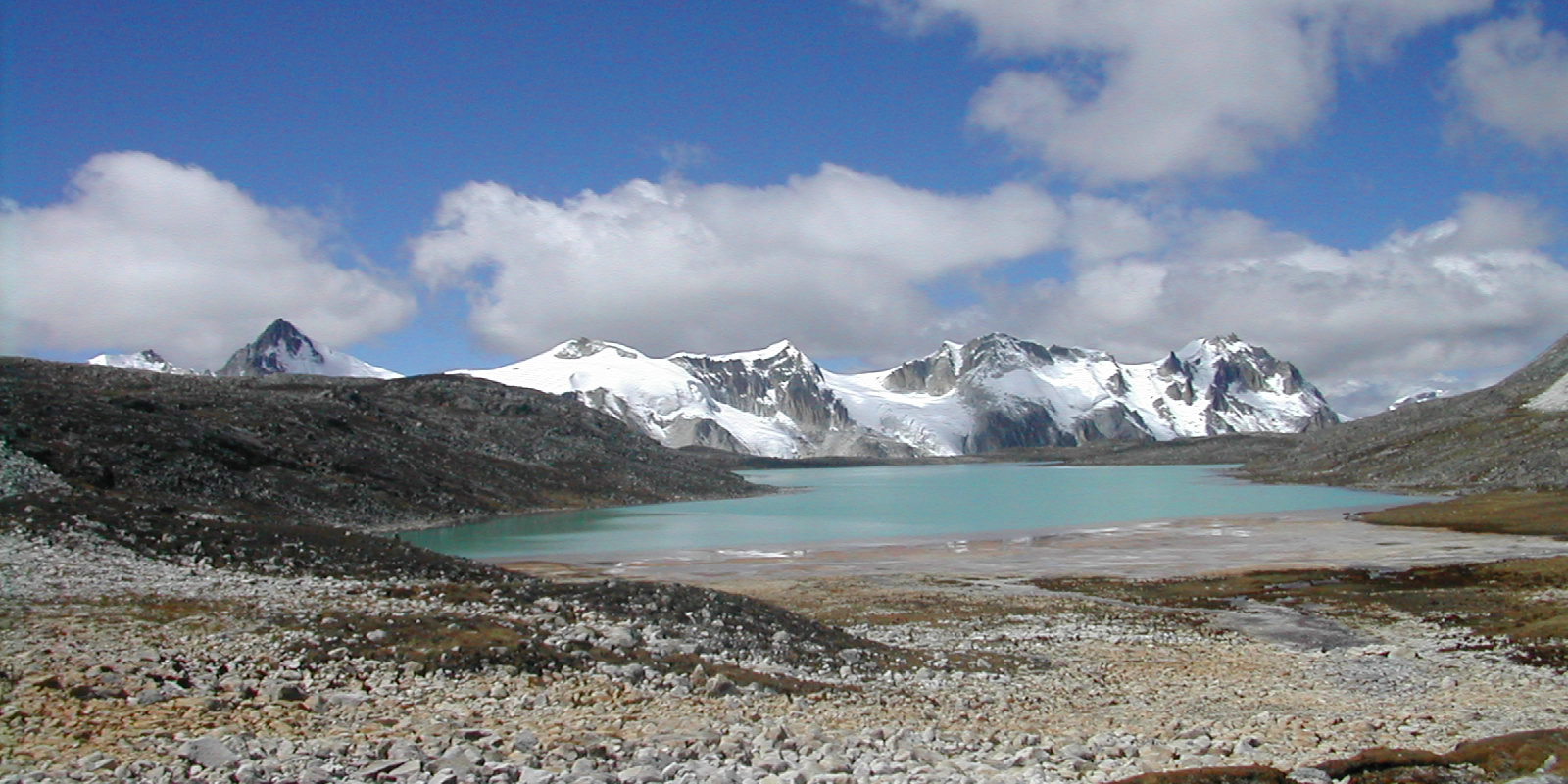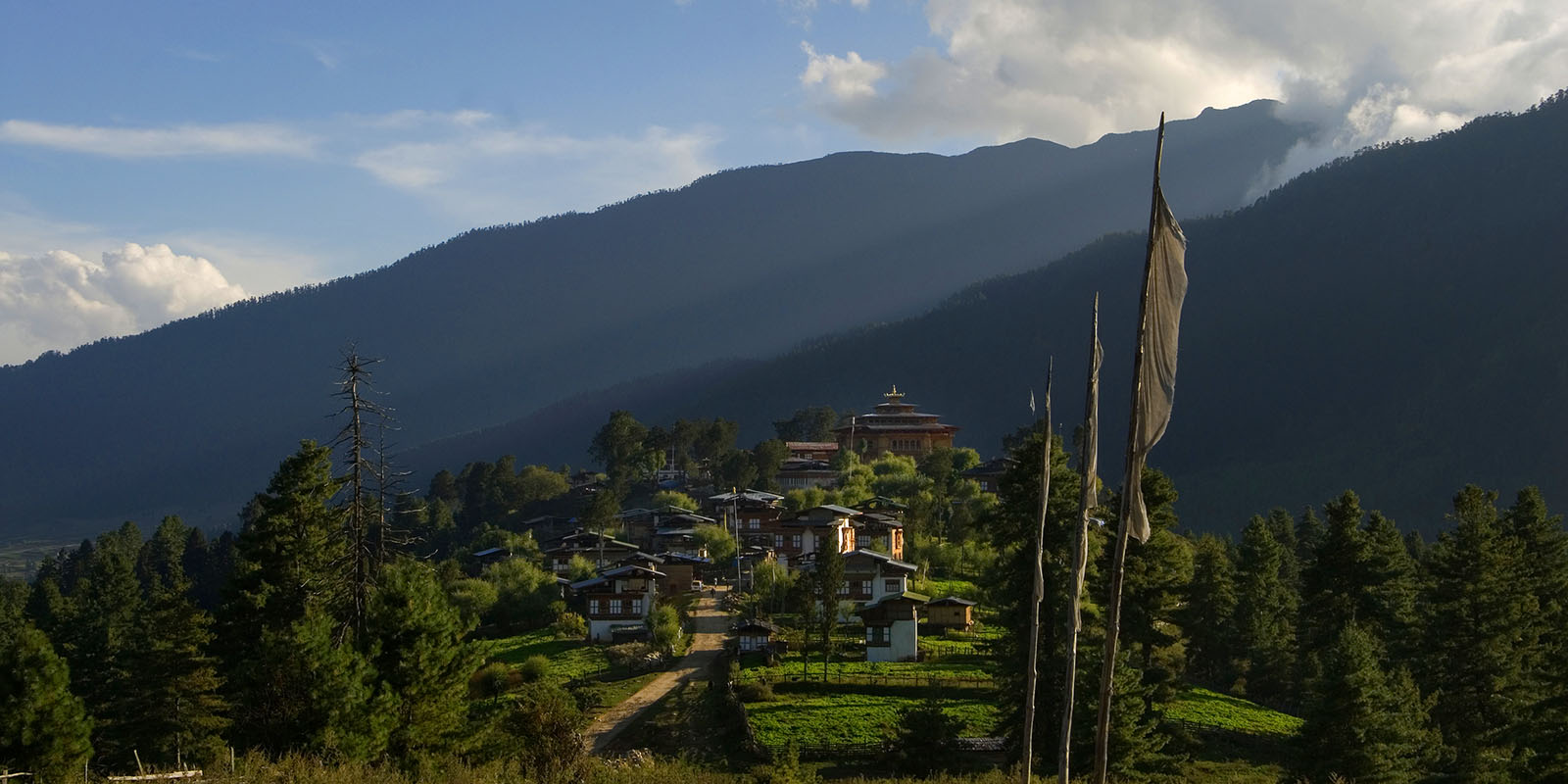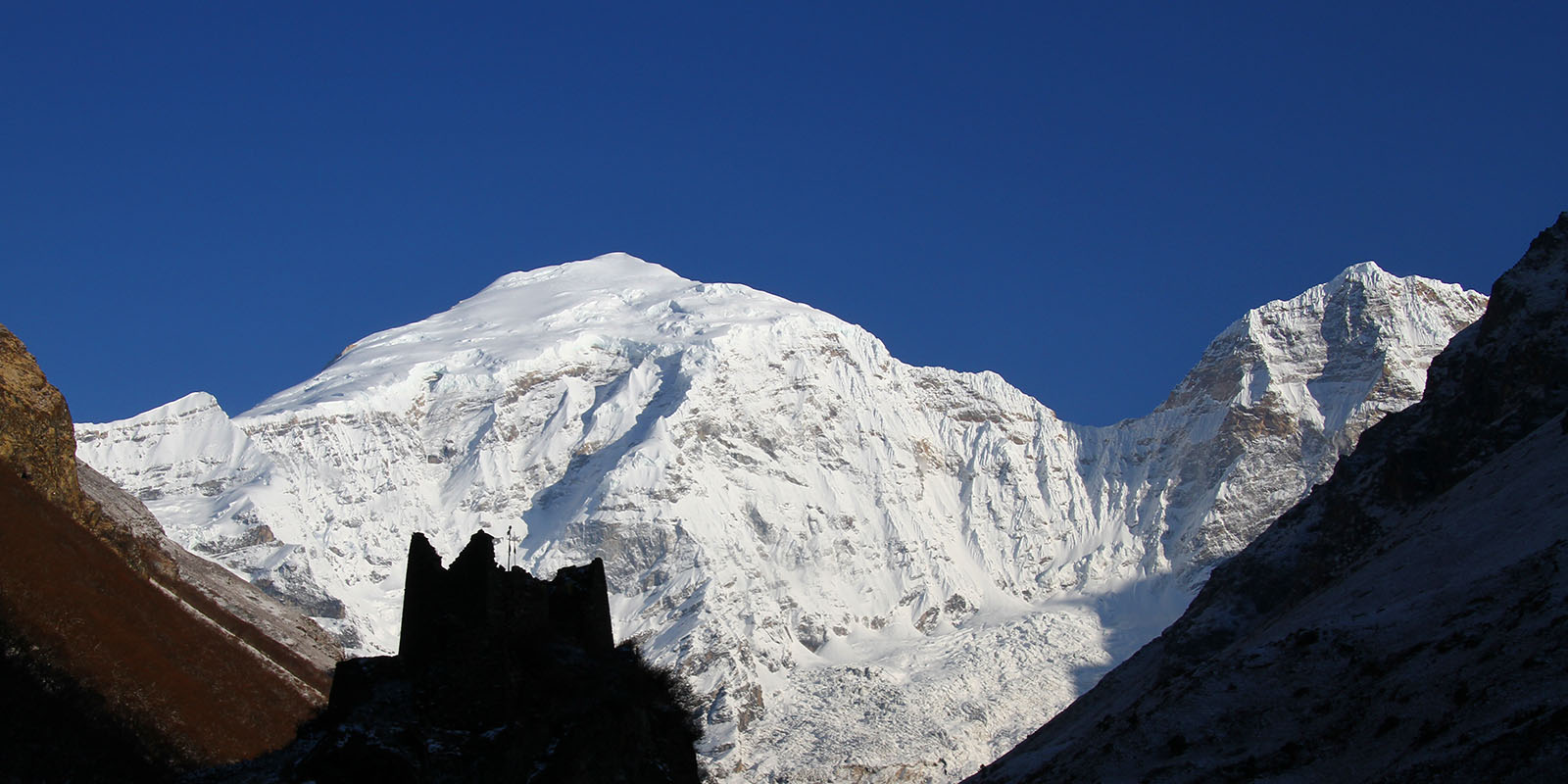
BEST SEASON:
March, April, May, September, October & November. OVERVIEW: Private trips available on request based on your preferred dates of travel. Best times to visit are in Spring from March to the start of May when the rhododendrons and spring flowers are in full bloom and in the Autumn from the end of September to early November. One of the most beautiful and unspoilt trekking areas in the entire Himalaya. Travel through diverse Bhutanese landscapes beginning at Durkgyal Dzong and passing through beautiful villages, colourful markets, scattered hamlets and farmland. Explore richly forested valleys and high alpine Yak pastureland. Visit ancient monasteries and the Royal Goldsmith’s workshop. Sit and relax or enjoy a spot of trout fishing in Jangothang’s sky blue lake. Trek through stunning landscape and over high mountain passes to Chomolhari’s glacier. Enjoy the cool, clean, fresh air with magnificent views of majestic peaks including Mt. Everest, Kanchenjunga, Tsrim Gang, Jichu Drake and Chomolhari. Meet local people and encounter rare animal species like the Bahrain (blue sheep), mountain bears, eagles and the Snow Leopard.
Detailed Itinerary
Day 01: Arrive Paro On arrival at Paro airport, you will be met by our representative and transferred to your hotel after completion of arrival formalities. Evening visit to Paro market and town. Overnight at the hotel in Paro.
Day 02: Paro Morning visit to Ta Dzong, built in 1651 as a watchtower and in 1968 inaugurated as Bhutan’s National Museum. The collection includes art, relics, religious thangkha paintings, postage stamps, coins and handicrafts, as well as a small natural history collection. Below Ta Dzong is Rinpung Dzong ( Paro Dzong), “the fortress of the heap of jewels”, built in 1646, and now housing the offices of the district administration and Paro’s monk body. In the afternoon, visit Kyichu Lhakhang. Built by the Tibetan king, Songtsen Gampo in the 7th century, it is one of the oldest and most sacred shrines of Bhutan. Overnight at the hotel in Paro.
Day 03: Paro – Shana (17km, 5-6 hours) The trek starts from Drukgyel Dzong (2,580m) with a short downhill walk on a wide trail. The trail then climbs gently through well maintained rice terraces and fields of millet. Later on we come to apple orchards and forests. Soon the valley widens, and we reach the army post of Gunitsawa (2,810m). This is the last stop before Tibet. We continue upwards to just beyond Sharma Zampa (2,870), where there are several good camping places in meadows surrounded by trees.
Day 04: Shana – Soi Thangthangkha (20km, 7-8 hours) The trail again follows the Pa Chu (Paro river), ascending and descending through pine, oak and spruce forests. After crossing a bridge to the left bank of the river, we stop for a hot lunch. Then we continue along the river, climbing upwards through rhododendron forests, and crossing the river once more before reaching our campsite (3,750m).
Day 05: Soi Thangthangka – Jangothang (19km, 7-8 hours) The path ascends for a while until we reach the army camp. We then follow the river above the tree line, enjoying stunning view of the surrounding peaks. Hot lunch is served at a yak herder’s camp. A short walk from here into the valley takes us to our campsite at Jangothang (4,040 m). From here, the view of Chomolhari and Jichu Drake are superb.
Day 06: Jangothang – Lingshi (18km, 7-8 hours) The trail follows the stream for half an hour and crosses the bridge to the right bank. We now start our climb up to the first ridge, enjoying breathtaking view of Chamolhari, Jichu Drake and Tserimgang. The trail then takes us across a fairly level valley floor until the climb up to Nyele-la pass (4,700m). We descend gradually from the pass to our camp site at Lingshi (4,000m), enjoying a panoramic view of the mountain peaks and Lingshi Dzong as we walk.
Day 07: Lingshi – Shodu (22km, 8-9 hours) The Laya-Gasa route leaves the Chomolhari trek route here. Our trail climbs up towards a small white chorten on a ridge above the camp, then turns south up the deep Mo Chu valley. The trail stays on the west side of this largely treeless valley, climbing steadily a short distance above the Mo Chu. It then crosses the river, and climbs steeply for two hours to Yeli-la (4,820m). On a clear day you can see Chomolhari, Gangchenta, Tserimgang and Masagang from this pass. Descend alongside a stream to a rock shelter in the cliff face, and then continue on downstream till reaching Shodu (4,100m), where we camp in a meadow with a chorten in it.
Day 08: Shodu – Barshong (16km, 6/-7 hours) We are now back at the tree line, and our path follows the course of the Thimpu Chu, descending through rhododendron, juniper and mixed alpine forests. There are stunning views of rocky cliff faces and waterfalls along the way. We stop at the riverside for a hot lunch. Then the trail takes us gradually upwards to the ruins of Barshong Dzong (3,600m), near which we camp for the night.
Day 09: Barshong – Dolam Kencho (15km, 5-6 hours) The trail decends gently through a dense forest of rhodendron, birch and conifers, then drops steeply to meet the Thimpu Chu. The trail runs along the left bank of the river, climbing over ridges and descending into gullies where side streams run down into the river. The final stage of the trail climbs around a cliff face high above the Thimphu Chu, coming out onto pastureland where we camp for the night at 3,600m.
Day 10: Dolam Kencho – Dodena – Thimpu (8km, 3 hours) The trail winds in and out of side valleys above the Thimpu Chu, making a long ascent through a forest of conifers and high altitude broadleaf species to a pass at 3,510m. The trail then drops steeply down to the river, following it southward to the road head at Dodena (2,600m). Norbu Bhutan Travel transport meets us here, and we drive to Thimpu. Overnight at hotel in Thimpu.
Day 11: Thimpu – Paro Full day of sightseeing in Thimpu valley visiting the following, as time permits: National Memorial Chorten; Tashichhodzong (‘the fortress of the glorious religion’); National Library; Institute for Zorig Chusum (Bhutanese arts and crafts school); National Institute of Traditional Medicine ( outside only ); Handicrafts Emporium. Evening drive to Paro. Overnight at the hotel in Paro.
Day 12: Paro Depart After breakfast, drive to Paro airport for flight to onward destination.
